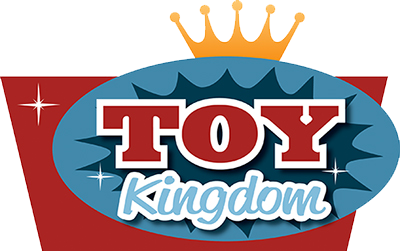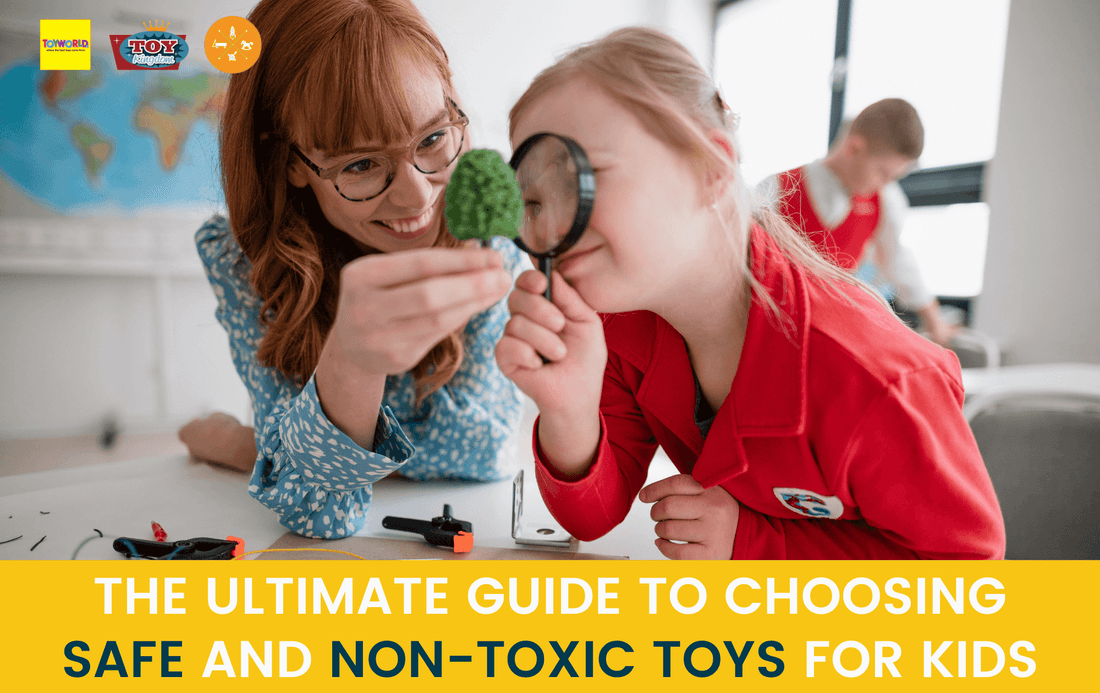Whether because of their materials, detachable parts or any potential safety hazard, toys can be really unsafe for children, risking their health. And - let’s be honest - children, especially younger ones, are not adverse to putting things in their mouths. While this tendency, known as mouthing, is very normal and beneficial to children, it creates a whole new level of risk when it comes to the toys they use. This can be really stressful for parents or loved ones of children when trying to find toys. In response to this, we’ve put together a comprehensive list to use when choosing your child’s next toy to help keep your child safe and your mind at ease.

Only buy stage-appropriate toys
One of the first steps to picking out safe toys for your children is to consider what stage of physical and cognitive development they are in. This will dictate what toys they’ll be safer with and understand how to use appropriately. These toys will also be tailored to the needs of children and omit features that may be dangerous, such as small detachable parts that can be a choking hazard to younger children.
If knowing what toys are inclusive for your child, there are plenty of free resources accessible, such as this product safety article created by the Australian Government. It states what toys are generally safe and not safe for children up to 3 years old, such as blocks and stacking toys (safe) and balloons and marbles (very unsafe).
Find non-toxic brands
There are more and more non-toxic brands becoming readily available, which is a great thing for our consumer habits. However, a good tip to figure out what brands are selling non-toxic toys is to see if they’re made sustainably. If so, the toys are being produced in a non-polluting way without toxic chemicals. This reduces the harm to the environment and, more likely than not, our children.
You can find our recommendations on the best sustainable toys here.
Avoid plastic toys (especially PVC!)
There are many types of plastic toys out there, all of which are at risk of shedding harmful microplastics. If children are chewing on their toys, they are at risk of ingesting these microplastics, or the chemicals from the paint on plastic toys, which could be dangerous to their health.
Additionally, one type of plastic you really must avoid is polyvinyl chloride, also known as PVC. PVC is often found in figurines and playsets to make them more durable, however it “contains dangerous chemical additives including phthalates, lead, cadmium, and/or organotins, which can be toxic to your child's health”.
Choose natural materials
Rather than list everything you should avoid, perhaps an easier option is to say what you should be trying to find, and that is basically any natural material. Wood, cotton, wool and natural rubber are some top choices for safe, non-toxic toys as they don’t contain any harmful chemicals. These materials are also great for the planet, are more durable, and have been found to reduce anxiety because they don’t overstimulate children.
Use water or plant-based paints
Art is an amazing way to foster play in children, but it can pose a threat as paints and other materials are so hands-on, potentially causing skin damage and other harm if toxic. Using water or plant-based paints are non-toxic and super safe, lowering the risk of skin reactions, allergies and compromised air quality.
Buy durable toys and know how to care for them
Sometimes, it’s better for our finances to buy a cheaper toy. However, even if it is non-toxic, it can become harmful when it ultimately breaks. This puts your children, and others, at risk.
Once you buy safe, durable toys, ensure you keep them in a safe place, check them regularly for damage and read the instructions on how to use them appropriately with your child. This will keep them safe for as long as possible.
Kids Health made a great quick list to check if a toy is still safe to use:
- Wooden toys shouldn't have splinters.
- Bikes and outdoor toys shouldn't have rust.
- Stuffed toys shouldn't have broken seams or exposed removable parts.
Fabric toys should be washable
Soft toys should be washed once a month to keep them clean and from being overtaken by dust mites, which can be a big problem for children with asthma and/or allergies. Also remember to disinfect them after children have been sick so that nothing harmful lingers longer than necessary.
Toys made of fabric also need to be labelled as flame resistant or flame retardant to be deemed safe for children to play with.

Get to know safety labels
Similar to the last point on flame resistant labels, toys will have different safety labels to detail what they are safe for. Getting to know them is the best way to ensure your children are playing with safe, non-toxic toys, and picking them out will be a breeze!
According to Seattle Children's Safety Resources, “Choose toys labelled phthalate-free, PVC-free and BPA-free, [and] avoid plastic toys with recycling codes #3, #6 and #7.”
Limit the number of toys with added features like loud sounds or projectile features
Toys with these intense additions, like loud settings and detachable parts that are meant to be rocketed off in different directions, can be dangerous for everyone around them, potentially causing hearing or eye damage when used incorrectly. You may want to monitor how toys are being used, and even opt for quieter, safe play with controlled volume or softer toys which is more beneficial for some children, as well as less risky.
Be careful of bath toys with holes
When you're considering bath toys, there can be serious health risks with the bath toys with holes for squirting water or squeaks, as they are difficult to dry out, trapping mould on the inside that you can’t clean.
If you found this list helpful, or have any more suggestions on how to choose safe and non-toxic toys, let us know! Until then, stay safe and good luck toy shopping.



